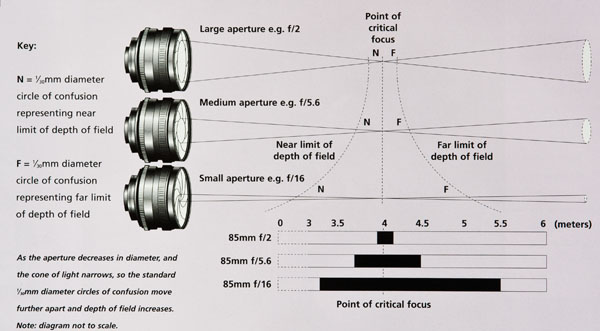When a lens is focused at a particular distance, objects in the plane of focus are rendered critically sharp. The so-called plane of focus is spherical rather than planar. The radius of the sphere is equal to the focused distance, so objects which lie at the relevant distance from the lens will all be sharp in an image. Objects situated at greater of lesser distances from the lens will be rendered less than critically sharp. In other words they will be slightly blurred.

When a photograph is viewed by a human observer, small reductions in sharpness may not be noticed. However, as objects further from the plane of focus are viewed, and sharpness decreases, so the blurring becomes more apparent. The point at which lack of sharpness becomes noticeable is dependent upon a number of factors. Principal considerations are variations in the human eye, distance from the image, and the lighting conditions under which an image is viewed.
Any subject may be considered to consist of pinpoints of light which, when sharply rendered, are all reproduced as corresponding tiny points in an image. When objects do not lie in the plane of focus, the points of light are not properly focused in an image and are reproduced as tiny blurred circles. These blurred circles become larger as the distance of an object from the plane of focus increases. The circles are known as circles of confusion. Note that the black bars in the lower diagram represent the resulting depth of field for each of the three apertures illustrated. The depth of field is greatest at f/16 because the circles of confusion are further from the point of critical focus.
In the diagram above the point of critical focus, clearly marked by the vertical line, is the same for each of the three lens apertures illustrated. The points "N" and "F" for each of the three examples mark the near and far limits of depth of field. These limits are defined as the points where the diameters of the circles of confusion (located on the curved lines) reach the generally accepted figure of 1/30mm. At these points the human eye perceives that the image is less than critically sharp.
Whatever definition for the circle of confusion is preferred or adopted, the definition of depth of field relies upon it. Depth of field refers to the range of distances from the lens to the subject, within an image, which are perceived as sharp. They key element in this definition is of course perception, which is directly related to the diameter of the circle of confusion.






